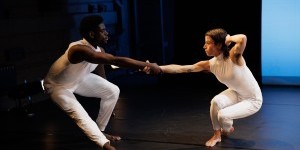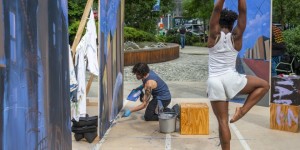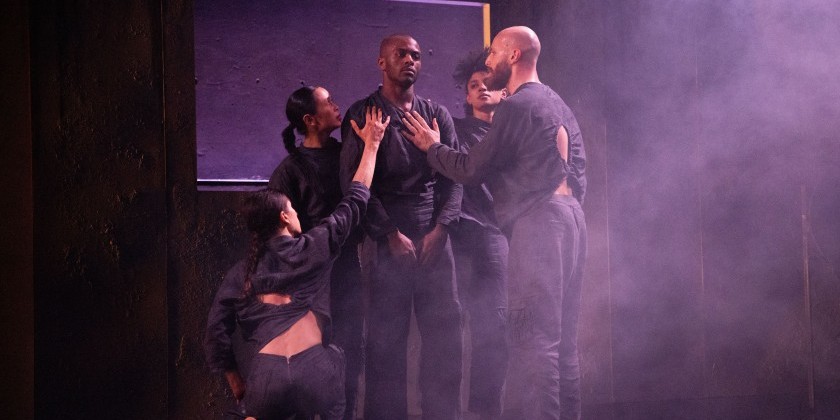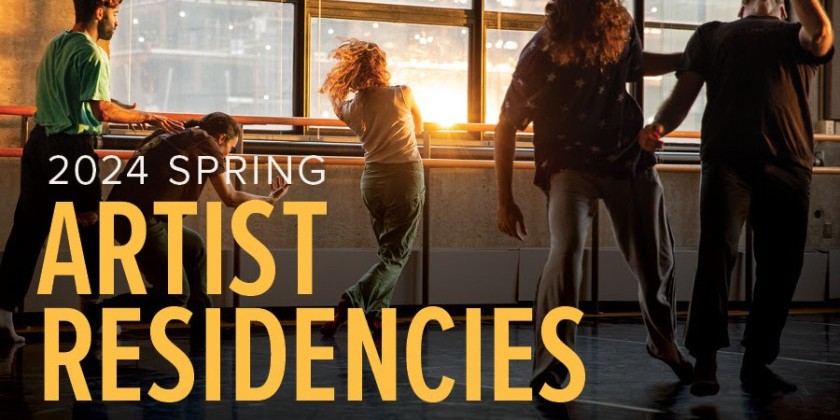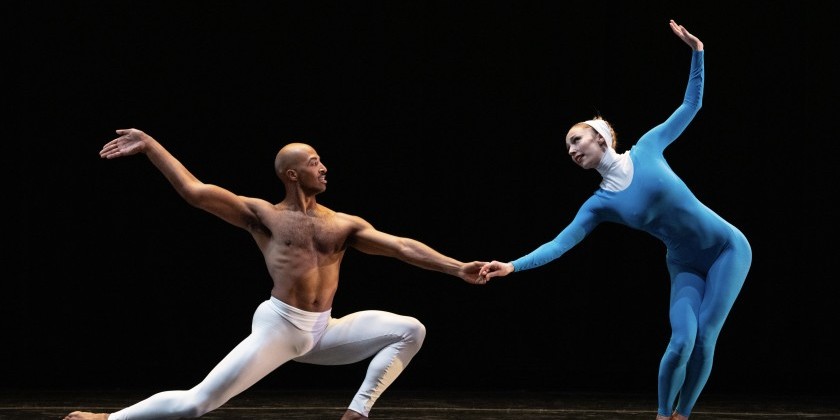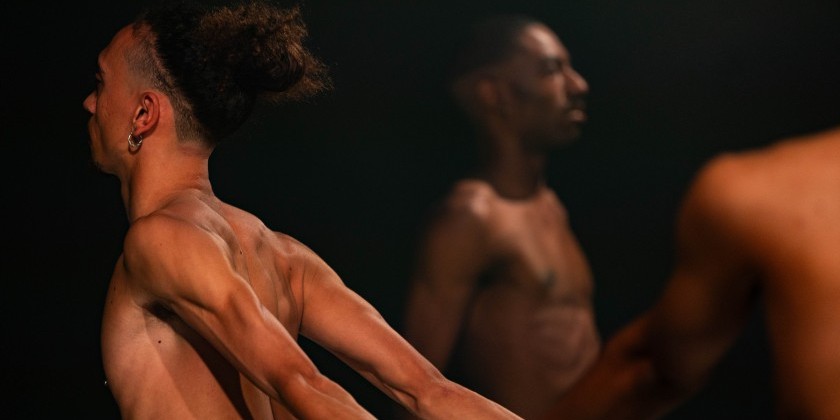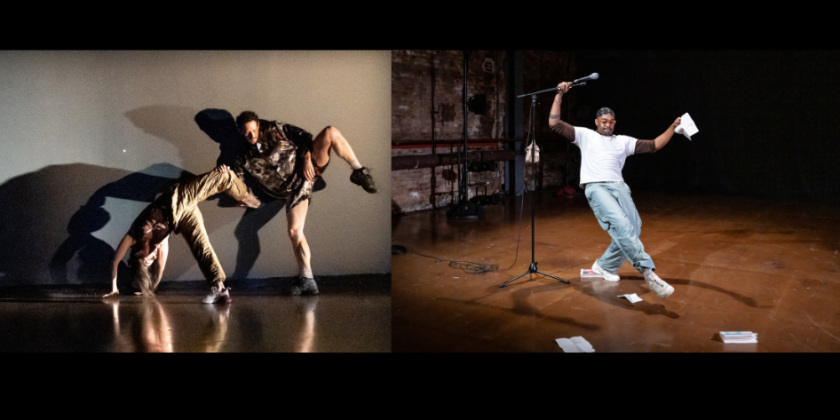IMPRESSIONS: Yasushi Inoue's "The Hunting Gun" with Miki Nakatani and Mikhail Baryshnikov at BAC
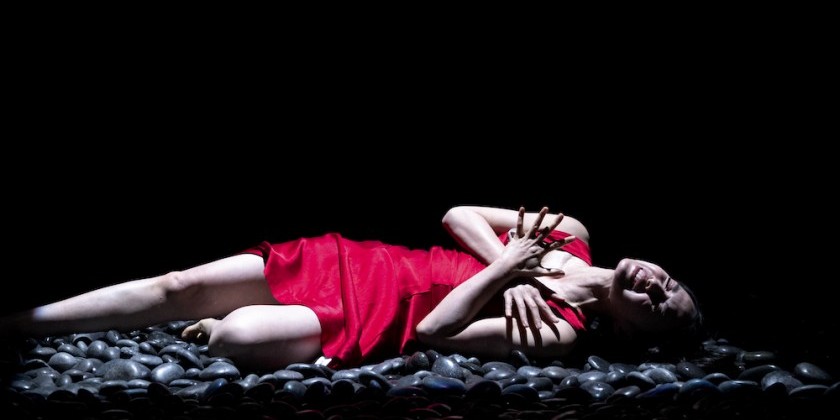
Presented by Emanuela Barilla
Adapted for the stage by Serge Lamothe // François Girard, Director // Cath Brittan, Producer
David Finn and François Girard, Creative Producers // Misaki Mouri, Co-Producer
François Séguin, Set Designer // David Finn, Lighting Designer // Renée April, Costume Designer
Alexander MacSween, Music // Tom McCamus, Poet's Voice
The Hunting Gun, Copyright 1949, The Heirs of Yasushi Inoue. All rights reserved.
The Hunting Gun is, strictly speaking, not a dance, though movement and form prove essential to the nuanced characterizations that lend depth and humanity to its narrative. Serge Lamothe and François Girard’s 95-minute stage adaptation of Yasushi Inoue’s novella provides a full sensory experience within a stark, focused setting in Baryshnikov Arts Center’s Jerome Robbins Theater.
Celebrated Japanese actress, Miki Nakatani, transforms herself through a sequence of three roles in relation to Mikhail Baryshnikov’s brooding husband figure, Josuke: his lover’s young daughter Shoko, fiery wife Midori, and ill-fated lover Saiko. Nakatani occupies the shifting stage territory, vocal and visible throughout, while Baryshnikov is set high behind a scrim, circumscribed in both space and movement, his silent presence revealed and concealed in turn as the drama unfolds. François Séguin’s sets and brilliantly subtle stagecraft give each scene its own physical and symbolic terrain: a shallow lily pond, round black stones, and smooth wooden slats.
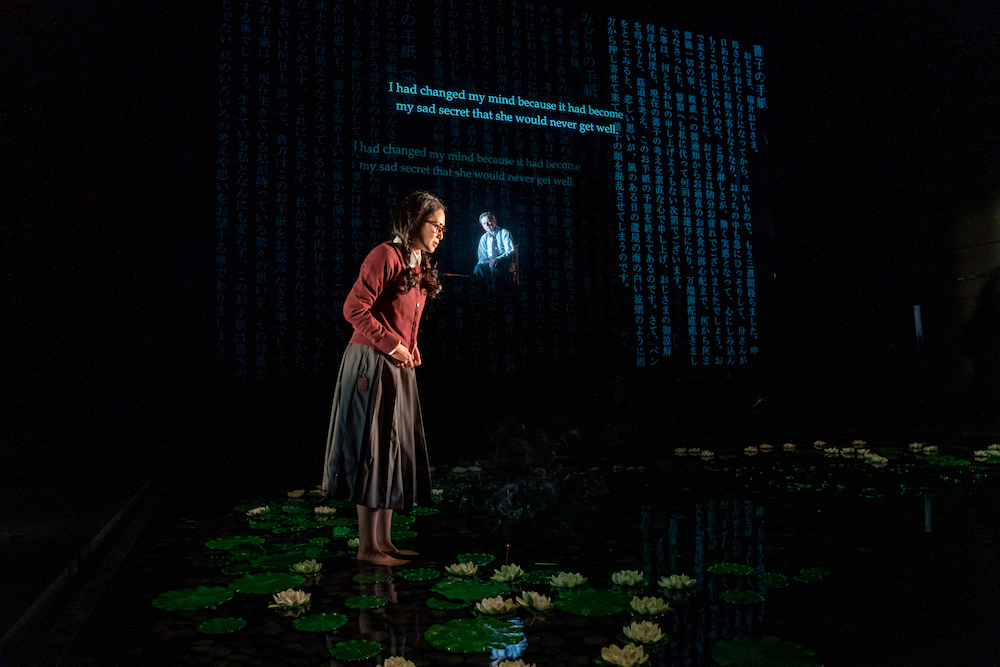
Characters, stories, and relationships come into full relief through three long letters addressed to Josuke from each of the women. Nakatani narrates the letters entirely in Japanese, with the ghostly text of the letters projected onto the scrim along with English supertitles. She deftly embodies each narrator in both manner and dress as the stage environment transforms around her. Her dramatic shifts in vocal tone and cadence are as striking as her changes of posture, gestural language, and use of space, all of which coalesce sharply into distinct, fully inhabited personae.
In stark contrast to Nakatani’s chameleonic tour de force, Baryshnikov’s Josuke is a staid, solemn figure who remains wreathed in shadow even as the truth of his actions and their tragic repercussions come to light in the foreground. He moves with meditative slowness, cleaning and wielding a long hunting rifle, every pivot and gesture articulately pronounced and tensely amplified by Nakatani’s impassioned performance. His weighted actions and fixed position lend his presence a looming gleam as cold, hard, and heavy as his weapon.
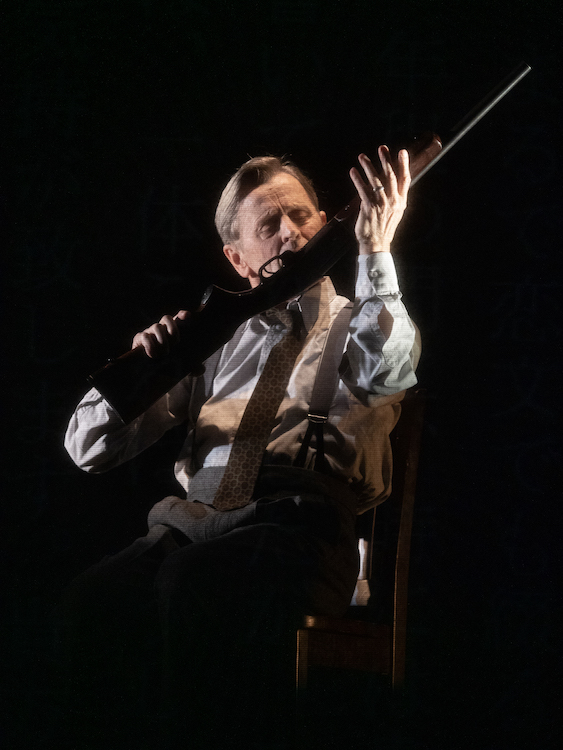
The first letter, from timid schoolgirl Shoko, takes a pleading, respectful, and at times apologetic tone as the young woman addresses her elder while wrestling with her mother’s death and Josuke’s implication in it. Dressed in a loose-fitting school uniform, Shoko wades through the lily pond, quietly splashing her feet as she winds slowly through the space. In each corner she crouches briefly to strike a match and light a stick of incense; the sudden flare of fire and sweet, mournful scent linger in her delivery. Her shoulders curl inward, eyes downcast but intensely focused as softly spoken words tumble and halt with the uncertain courage born of freshly shattered innocence. As she tells of her mother’s suicide, her voice rises and breaks, her body doubled over with anger and grief as Josuke looks on, gun to his shoulder cradled like a child.
The stage space and sonic atmosphere darken as the lilies retreat under the stage, the water draining away to reveal round black fist-sized stones bathed in a grid of warm light. Shoko peels off her modest uniform to reveal the wife, Midori, in a slinking red dress. Her posture transforms into one of confident, womanly maturity, her gaze direct, seductive, and confrontational—her letter is a biting farewell that stings with bitterness and vengeance. The rich lilt of her voice deftly hides and reveals the pain and venom of her cold, broken marriage, just as the frankness of her sexuality shimmers as she grazes the curves of her body and plays with her loose, cascading hair. Her bare feet curl and slip over the uneven surface of the still-damp stones that jostle and clack in response to her impulsive movements, and she falls to the ground as gut-wrenching memories and confessions pour out of her. Her catharsis liberates her from the fortress of her marriage, but does not negate or repair the irreparable damage it has done.
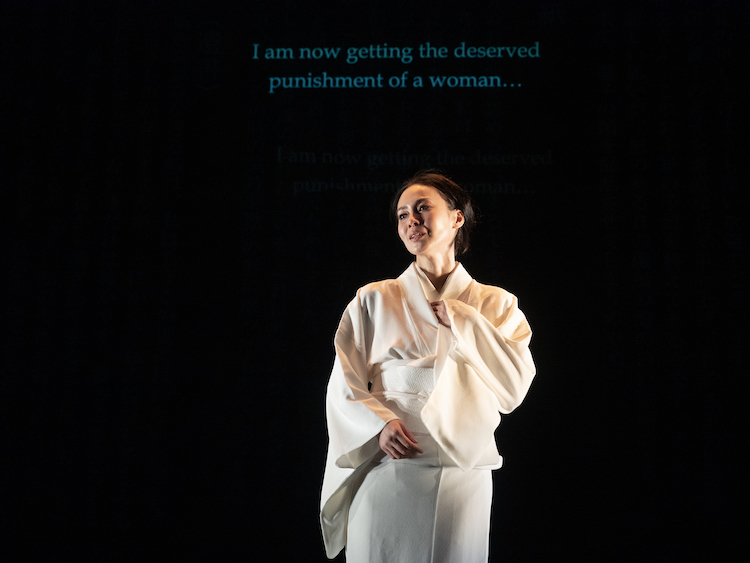
Midori’s explosion lingers in the air as the next stage transformation begins. She faces upstage, peeling off the red dress to reveal a delicate white slip. Juxtaposed against this intimate gesture, wooden slats emerge from downstage to cover the stones, unrolling in segments with loud, sharp cracks. The slats encroach ominously on Saiko, the lover, and with the transformation complete she begins to deliver her suicide letter. Her voice is quiet, steady, and clear as she stares unflinchingly into the truth of her wilful deception, shared sin, and fated death. She kneels placidly in a small pool of light as a box descends from above to rest beside her. Its contents: a pure white kimono in which she ceremoniously wraps herself as she relates her secret pain, longing, and despair. The complex mechanics of physical concealment in her kimono ritual reflect the burden of sin in her illicit love affair, and it is only when she is fully dressed and entirely confessed that she is able to find the peaceful release of death. Her voice fades but doesn’t waver as she ponders the questions “Do you want to love? Or do you want to be loved?” She rises to walk slowly downstage while above and behind her, Josuke lights a match. Just as the flame swells, he blows it out. A thick silence descends as a puff of sulfur floats through the dark.
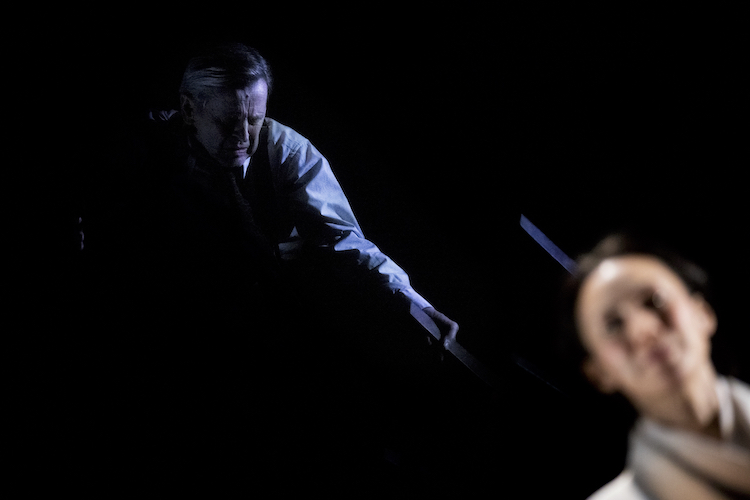
The sheer density and weight of these dramatic narratives, images, and embodiments leave a bewildered mix of emotions and sensations in their wake. Though an irreconcilable gulf of space and time divides the characters, there are fleeting moments in which they appear aware of each other—a lingered gaze, tenuously outstretched fingertips — moments that only deepen their mutual isolation and shattered fates. Each letter explores the complex web of tensions strung between love, sin, memory, deception, and confession, culminating in a tragedy of revelation and fragmentation. By probing the relationship between self and other, The Hunting Gun succeeds in exploding the simple trope of the “love triangle” to excavate moral questions and approach fundamental mysteries of the human experience.






